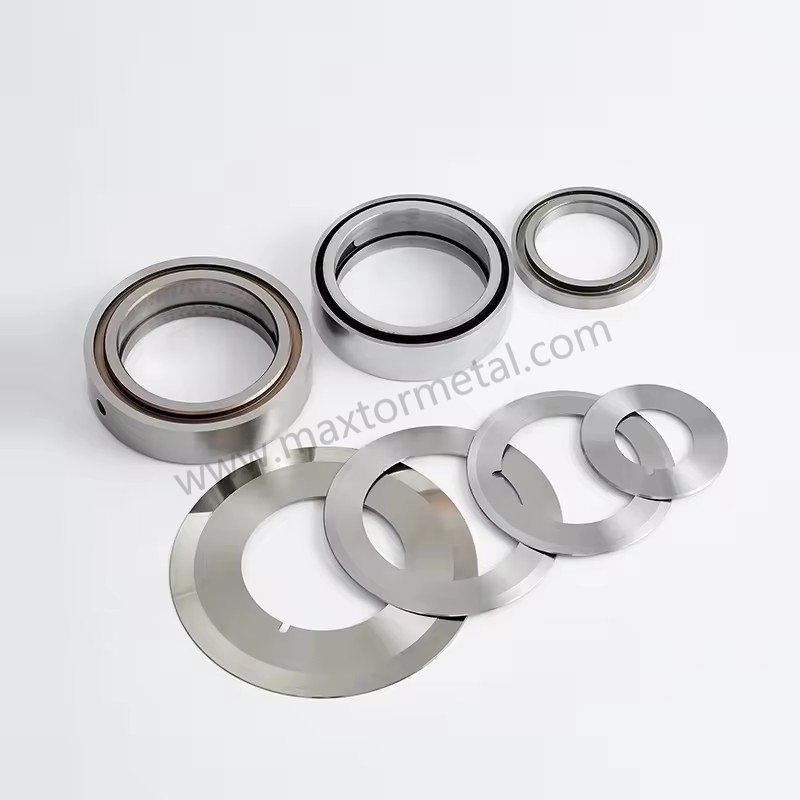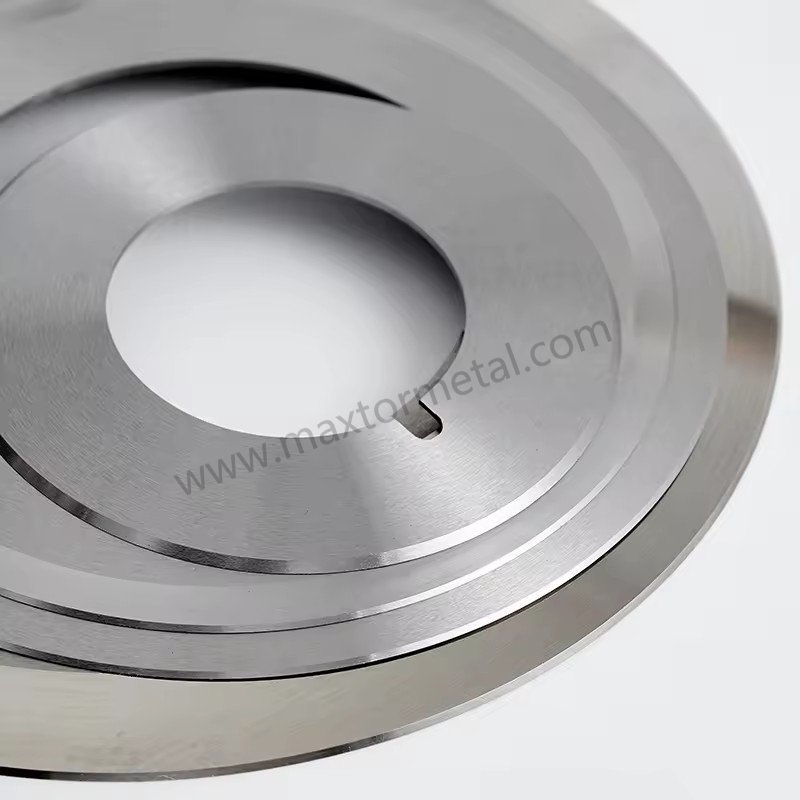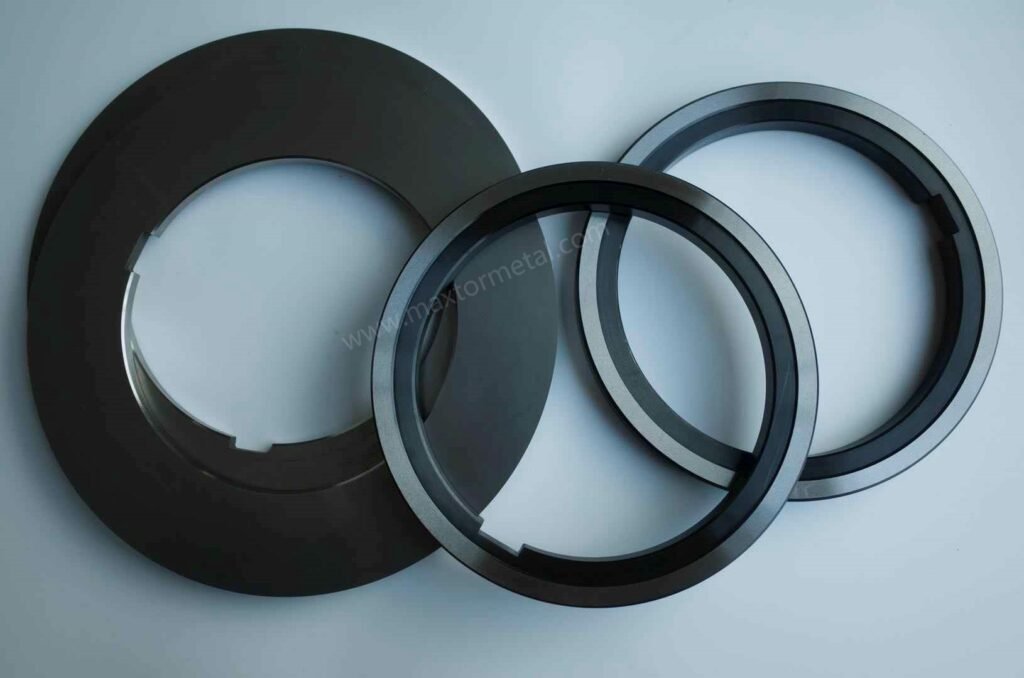1. Introduction: Why Is Choosing the Right Slitter Blade Material Crucial?
In modern manufacturing, slitter machines are essential equipment on many production lines. Whether in metal processing, paper production, or plastic film manufacturing, slitter machines play a key role. At the heart of these machines, slitter blades are crucial components. The performance of a slitter blade directly affects the efficiency of the machine, the precision of the cuts, and the quality of the final product. Therefore, selecting the right slitter blade material can not only extend the blade’s lifespan but also improve production efficiency, reduce downtime, and cut maintenance costs.
This article explores the characteristics of different slitter blade materials, helping you choose the best one based on your specific production needs and operating environment.
2. Overview of Common Slitter Blade Materials
When choosing a slitter blade material, you must consider factors such as physical properties, wear resistance, corrosion resistance, and cost-effectiveness. Here are some common slitter blade materials and their characteristics:
2.1 High Carbon Steel
Advantages: High carbon steel blades are known for their high hardness and excellent wear resistance. Due to the high carbon content, this material can achieve a high hardness level after proper heat treatment, allowing it to maintain a sharp edge during cutting.
Disadvantages: However, high-carbon steel has its limitations. Its high hardness usually comes with increased brittleness, making the blades more likely to break under high impact or when cutting hard materials. Additionally, high-carbon steel is prone to rust, especially in humid or corrosive environments, requiring extra protective measures.
Suitable Applications: High-carbon steel blades are often used in applications where blade longevity is not critical, such as cutting paper and films. Their relatively low cost makes them an economical choice.
2.2 Stainless Steel
Advantages: Stainless steel blades are renowned for their excellent corrosion resistance. The material contains chromium, which forms a dense chromium oxide layer that prevents further oxidation. Stainless steel blades are ideal for use in humid or chemically corrosive environments. Additionally, stainless steel is relatively easy to process, allowing the blades to be manufactured in various shapes and sizes to meet different cutting needs.
Disadvantages: One major drawback of stainless steel blades is their relatively high cost. While their corrosion resistance and low maintenance can reduce long-term costs, the initial investment is much higher than that for high carbon steel blades.
Suitable Applications: Stainless steel blades are suitable for cutting corrosive materials or in environments that require high cleanliness, such as food packaging and medical supplies manufacturing.
2.3 Tool Steel
Advantages: Tool steel is another popular material for slitter blades due to its exceptional hardness and wear resistance. It contains alloying elements like tungsten, molybdenum, and vanadium, which provide the blades with high wear resistance and thermal hardness, allowing them to maintain good cutting performance at high temperatures.
Disadvantages: However, tool steel blades are costly to manufacture because the addition of alloying elements increases material costs. Additionally, tool steel is difficult to process, requiring precise machining techniques and equipment.
Suitable Applications: Tool steel blades are primarily used in demanding industrial applications, such as cutting metal sheets and thicker materials. They perform exceptionally well where high hardness and wear resistance are needed.
2.4 Tungsten Carbide
Advantages: Tungsten carbide is one of the hardest materials available for blades, offering extremely high wear resistance. It is particularly suitable for high-strength and high-speed cutting operations. Tungsten carbide blades have a very long service life and maintain their sharpness and durability even in harsh working conditions.
Disadvantages: The main drawback of tungsten carbide blades is their brittleness, which makes them prone to breaking under impact. Additionally, they are expensive, often costing several times more than other blade materials.
Suitable Applications: Tungsten carbide blades are commonly used for cutting hard materials, such as steel, copper, and other metal alloys. They are ideal for applications that require high wear resistance and long service life.
3. How to Choose Blade Material Based on Slitting Materials and Applications
Selecting the right slitter blade material depends on the specific slitting materials and applications. Here are some key factors to consider:
- Type of Material to Be Cut: Different materials have different cutting requirements. For softer materials like paper and plastic films, high carbon steel or stainless steel blades may be sufficient. For metal sheets and other hard materials, tool steel or tungsten carbide blades are better choices.
- Operating Environment: Environmental conditions such as humidity, temperature, and exposure to chemicals also influence material choice. Stainless steel blades are advantageous in humid or chemically corrosive environments.
- Production Efficiency and Cost Considerations: Although high-performance materials like tungsten carbide blades have a high initial cost, their durability, and lower replacement frequency can significantly reduce long-term costs.
- Safety and Maintenance Costs: The wear rate and replacement frequency of different blade materials directly impact operational safety and costs. Choosing durable materials can reduce replacement frequency and improve production safety.
4. Common Mistakes And Tips When Choosing Blade Materials
When choosing slitter blade materials, be aware of the following common mistakes and considerations:
- Mistake: Focusing only on initial costs while neglecting the total cost of long-term use. Some companies opt for cheaper blades to save costs, but these blades often lack durability, leading to more frequent replacements and increased downtime.
- Consideration: The quality of materials can vary significantly between suppliers. Before purchasing, ensure the supplier’s materials meet industry standards and can pass necessary quality tests.
- Suggestion: Users are advised to conduct small-scale trials before purchasing, and testing the blades in their actual production environment to verify their quality and suitability.
5. Tips to Extend the Service Life of Slitter Blades
To extend the service life of slitter blades, here are some practical tips:
- Proper Installation and Calibration: Ensure the blades are securely installed and that the cutting angle and pressure are appropriate to avoid abnormal wear and damage due to improper installation.
- Regular Maintenance and Inspection: Establish a regular inspection and maintenance schedule to check for blade wear and avoid using overly worn blades, which can damage the machine or cause safety incidents.
- Cleaning and Care: Choose the appropriate cleaning methods based on the blade material’s properties. For example, stainless steel blades should undergo regular rust prevention, while tungsten carbide blades should avoid heavy impact.
6. Conclusion: How to Make the Best Material Choice to Improve Production Efficiency
Choosing the right slitter blade material is key to improving production efficiency, reducing costs, and ensuring product quality. This article discussed the pros and cons of four common materials and provided guidance on selecting the right material based on specific applications. By considering factors such as material properties, application scenarios, operating environment, and cost-effectiveness, you can choose the most suitable blade material for your slitter machine.
7. Frequently Asked Questions (FAQ)
When selecting slitter blade materials, customers often have common questions. Here are five frequently asked questions and their answers to help you better understand and choose the right blade materials.
7.1 How can I assess the quality of blade materials?
Answer: You can evaluate blade material quality by considering several factors: First, choose a reputable supplier and ask for material composition analysis and performance test reports. You can also perform hardness and wear resistance tests to ensure the blades meet the required standards. Additionally, comparing the quality consistency of different batches can help assess the supplier’s reliability.
7.2 Why do my blades wear out so quickly?
Answer: Rapid blade wear can result from several factors, including:
- Selecting an unsuitable material for the cutting application.
- Improper blade installation or calibration, leading to uneven force distribution during operation.
- Incorrect cutting parameters, such as excessive speed or pressure.
- Environmental factors like temperature, humidity, or chemical exposure that accelerate blade wear.
7.3 What causes blades to chip or break during use?
Answer: Blade chipping or breaking is usually due to excessive impact or uneven force distribution. This can happen if hard debris or metal pieces are encountered during cutting or if the blade material lacks sufficient toughness for high-strength cutting tasks. Additionally, excessive lateral force during installation or use can cause blade edge damage or breakage.
7.4 How do I choose the right blade material for different cutting needs?
Answer: The choice of blade material depends on the nature of the material being cut:
- For soft materials like paper and plastic film, high-carbon steel or stainless steel blades are recommended due to their moderate hardness and economic cost.
- For harder or thicker materials, such as metal sheets, tool steel or tungsten carbide blades are ideal because of their higher hardness and wear resistance.
- In corrosive environments or where high cleanliness is required, stainless steel blades are the best choice.
7.5 How should blades be maintained and cared for?
Answer: Proper maintenance and care are essential to extending the service life of blades. Here are some maintenance tips:
- Clean blades regularly to prevent residue buildup, especially when cutting sticky materials.
- For blades prone to rust, like high carbon steel, apply regular rust prevention measures.
- Store blades properly after use, avoiding contact with other hard objects to prevent edge damage.
- Regularly check blade wear and replace them as needed based on usage frequency and wear level to maintain cutting performance and production efficiency.
8. Conclusion: What’s the Next Step?
If you still have questions about choosing the right slitter blade material, feel free to contact our sales team for professional advice. You can also request a free sample to experience our blade quality and performance firsthand.
By providing this comprehensive guide, we aim to help you make informed decisions when selecting slitter blade materials, ensuring optimal performance in your operations. No matter your production needs, we have the right solution for you.







